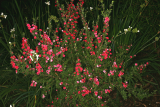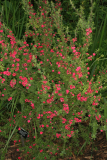Additional notes (click to expand)
Medicinal
Maori people have used the manuka plant for its medicinal properties for generations.
Essential oil extracted from manuka leaves is used to provide some antibacterial activity. The oil is also reported to sooth itchy skin.
https://www.kew.org https://www.kew.org/plants/manuka#:~:text=Maori%20people%20have%20used%20the,reported%20to%20sooth%20itchy%20skin.
Nomenclature
New Zealand tea tree, manuka, manuka myrtle.
Oakeley, Dr. Henry F. (2013). Wellcome Library notes.
link
Other use
Leptospermum scoparium J.R.Forst & G.Forst Myrtaceae. New Zealand tea tree, manuka, manuka myrtle. ‘Red Damask' is a cultivar with the RHS Award of Garden Merit. Distribution: New Zealand and southeast Australia. A red-flowered form. Important in New Zealand as the source for manuka honey. The leaves were reputed to have been used to make a tea by Captain James Cook (1728-1729) on his voyages to Australia and New Zealand. Johan and George Forst, father and son, were the scientists on Cook's second voyage (1772-1775). It produces an essential oil.
Oakeley, Dr. Henry F. (2013). Wellcome Library notes.
link
Geographical distribution
- Australasia, Australia, New South Wales
- Australasia, Australia, Tasmania
- Australasia, Australia, Victoria
- Australasia, New Zealand, Chatham Is.
- Australasia, New Zealand, New Zealand North
- Australasia, New Zealand, New Zealand South
Leptospermum scoparium J. R. Forst. & G. Forst.
Family: MYRTACEAEGenus: Leptospermum
Species: scoparium J. R. Forst. & G. Forst.
Common names: New Zealand tea tree; Manuka tea tree; Broom tea tree
Distribution summary: Australasia
Garden status: Currently grown
Garden location: Southern Hemisphere Wolfson bed (N)
Reason for growing: Medicinal

.JPG)
